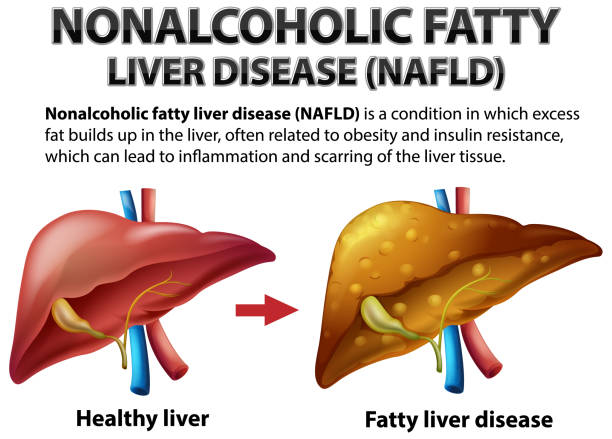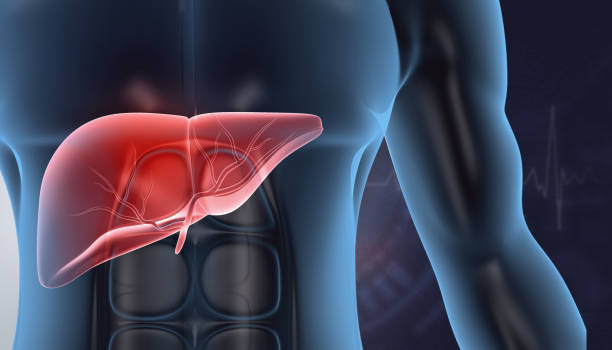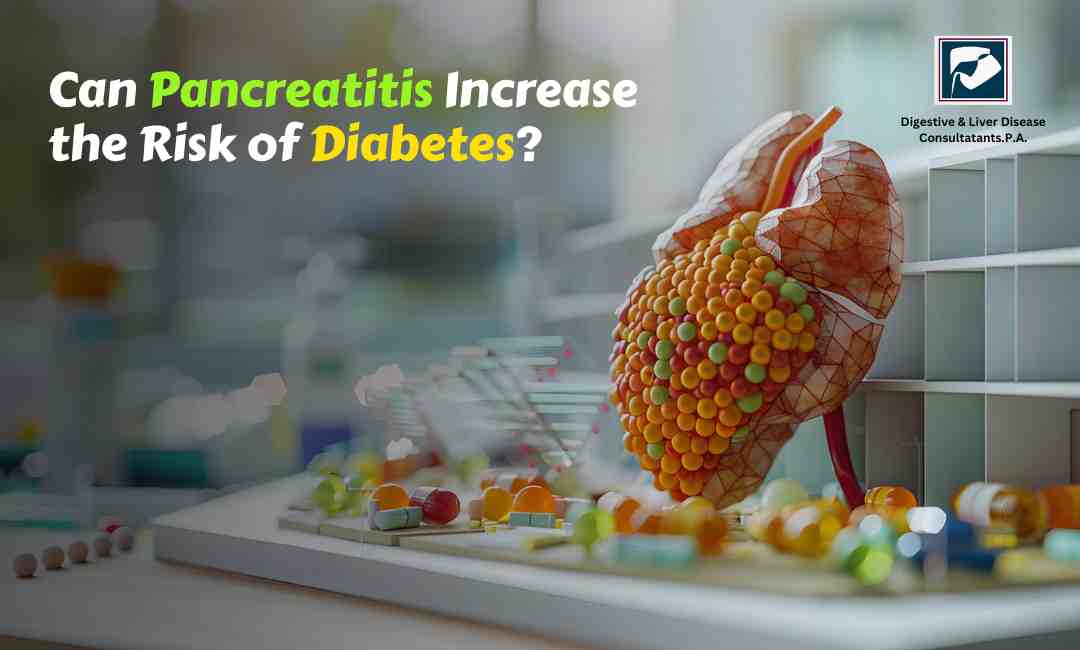It’s silent when it comes to symptoms, but the numbers are loud and clear—non-alcoholic fatty liver disease (NAFLD) is now the leading chronic liver condition in the United States, affecting about 25% of the population. Several factors contribute to this condition, but being aware of the risks and making mindful lifestyle choices can help keep it at bay.
In this blog, let's explore how you can protect yourself from this growing concern and how the Digestive Liver Disease Center (DLDC) can be your go-to resource for all your gastrointestinal health needs.
Read on to learn more!
What is Fatty Liver Disease?
Fatty liver disease refers to a condition characterized by the accumulation of excess fat in the liver, which can occur without significant alcohol consumption. The most common form is non-alcoholic fatty liver disease (NAFLD), affecting a substantial portion of the population.
NAFLD is often associated with obesity, insulin resistance, and metabolic syndrome, and it can lead to inflammation, liver damage, and more severe liver conditions if not managed properly.
This condition is be divided into two main categories:
-
Alcoholic Fatty Liver Disease (AFLD): Caused by heavy alcohol consumption, AFLD is a well-known risk factor for liver damage. However, this blog will focus on the more prevalent condition in the U.S., non-alcoholic fatty liver disease.
-
Non-Alcoholic Fatty Liver Disease (NAFLD): NAFLD is not related to alcohol use. Instead, it’s often associated with obesity, diabetes, high cholesterol, and other metabolic risk factors. NAFLD can progress to non-alcoholic steatohepatitis (NASH), a more severe form of the disease that can lead to liver fibrosis, cirrhosis, and even liver cancer.
The Prevalence of Fatty Liver Disease in the U.S.A
In recent years, the prevalence of NAFLD has skyrocketed in the U.S., paralleling the increase in obesity and diabetes rates. According to recent studies, about 100 million Americans are estimated to have NAFLD, making it a significant public health concern. In Houston, where obesity rates are among the highest in the country, the risk of developing NAFLD is particularly high.

Risk Factors for NAFLD
Several factors contribute to the development of NAFLD, with some being more prevalent in the Houston community:
-
Obesity: One of the most significant risk factors for NAFLD is obesity. With nearly 36% of Houston’s population considered obese, the city’s residents are at an increased risk for developing fatty liver disease. The excess fat stored in the body can also accumulate in the liver, leading to NAFLD.
-
Type 2 Diabetes: Individuals with type 2 diabetes are more likely to develop NAFLD. This is particularly concerning in Houston, where diabetes prevalence is higher than the national average. The link between insulin resistance and fat accumulation in the liver makes this a critical risk factor.
-
High Cholesterol and Triglycerides: Elevated levels of cholesterol and triglycerides in the blood are common in those with NAFLD. Houston’s love for rich, fatty foods can contribute to these elevated levels, increasing the risk of fatty liver disease.
-
Sedentary Lifestyle: A lack of physical activity is another major risk factor. Houston’s car-dependent culture and the hot, humid climate can make regular exercise challenging, contributing to a sedentary lifestyle that exacerbates the risk of NAFLD.
-
Genetics: Certain genetic factors may increase the susceptibility to NAFLD, particularly among Hispanic populations, who have a higher prevalence of the disease. With Houston’s diverse population, including a significant Hispanic community, this genetic predisposition is a relevant concern.
Symptoms of Fatty Liver Disease
One of the challenges in diagnosing NAFLD is that it often presents with no symptoms, especially in the early stages. However, as the disease progresses, some individuals may experience:
-
Fatigue: Chronic tiredness or fatigue can be a subtle symptom of liver dysfunction.
-
Abdominal Discomfort: A dull or aching pain in the upper right abdomen may occur as the liver enlarges.
-
Unexplained Weight Loss: Some individuals may notice unintended weight loss.
-
Jaundice: In more severe cases, yellowing of the skin and eyes can indicate advanced liver disease.
Diagnosing Fatty Liver Disease
Given the asymptomatic nature of NAFLD, it’s often diagnosed during routine blood tests or imaging studies done for other reasons. Diagnosis typically involves:
-
Blood Tests: Elevated liver enzymes (ALT and AST) in blood tests may indicate liver inflammation, prompting further investigation.
-
Imaging Studies: Ultrasound, CT scans, or MRI can detect fat accumulation in the liver. A specialized imaging test called FibroScan can also assess liver stiffness, indicating fibrosis or scarring.
-
Liver Biopsy: In some cases, a liver biopsy may be necessary to confirm the diagnosis and assess the severity of the disease, particularly if NASH or cirrhosis is suspected.
Treatment and Management of Fatty Liver Disease
There is currently no specific medication approved for NAFLD, making lifestyle changes the cornerstone of treatment. Managing the condition effectively involves:
-
Weight Loss: Gradual weight loss through a combination of diet and exercise can significantly reduce liver fat and inflammation. Losing just 7-10% of body weight can improve liver health.
-
Dietary Changes: A balanced diet low in saturated fats, refined sugars, and processed foods is essential. The Mediterranean diet, rich in fruits, vegetables, whole grains, and healthy fats like olive oil, is particularly beneficial for liver health.
-
Regular Exercise: Engaging in at least 150 minutes of moderate-intensity exercise per week, such as brisk walking or swimming, can help reduce liver fat and improve overall metabolic health.
-
Managing Diabetes and Cholesterol: Controlling blood sugar levels and managing cholesterol through diet, exercise, and medication is crucial for those with NAFLD.
-
Avoiding Alcohol: While NAFLD is not caused by alcohol, it’s essential to avoid alcohol to prevent further liver damage.
How to prevent NAFLD
Preventing NAFLD is especially important in Houston, where lifestyle factors can increase the risk. Here are some practical tips for Houston residents:
-
Choose Healthy Food Options: While enjoying Houston’s diverse food scene, opt for grilled or baked options instead of fried foods. Incorporate more vegetables, lean proteins, and whole grains into your diet.
-
Stay Active Despite the Heat: Find indoor exercise options, such as joining a gym or participating in fitness classes, to stay active year-round. Even short, frequent walks can make a difference.
-
Monitor Your Health: Regular check-ups with your healthcare provider can help detect any early signs of NAFLD, especially if you have risk factors like obesity or diabetes.
-
Educate Yourself: Understanding the risks of fatty liver disease and making informed choices can help prevent the condition and promote liver health.
Conclusion
Non-alcoholic fatty liver disease may be on the rise, but with the right knowledge and proactive lifestyle choices, you can significantly reduce your risk. Remember, your liver health is crucial to your overall well-being, and it's never too early to start taking care of it.
If you have concerns about NAFLD or any other gastrointestinal issues, don’t hesitate to consult the experts at the Digestive Liver Disease Center (DLDC). Their experienced team is here to guide you with personalized care and the latest treatments. Take the first step towards better liver health by scheduling a consultation today!






